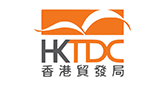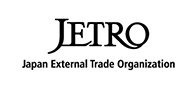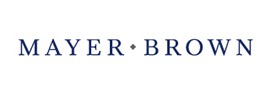Outsourcing & Offshoring Industry Market Research
Competitive Intelligence, Business Analysis, Forecasts, Market Size, Trends, Companies, Statistics
Available Data Services: Custom Research Projects, Database Subsription or PDF eBooks
PLUNKETT PROVIDES IN-DEPTH STATISTICS TABLES COVERING THE FOLLOWING INDUSTRY TOPICS:
-
Outsourcing & Offshoring Industry Statistics and Market Size Overview
-
Services Supplied to Foreign & U.S. Markets Through Cross-Border Trade & Through Affiliates: 1999-2019
-
U.S. Trade in Services by Major Category: 2014-March 2021
-
Top 50 Countries Exporting Textiles & Apparel to the U.S., All MFA Fibers: 2021-2022
-
U.S. Trade in Services by Affiliation & by Type: 2017-2019
-
U.S. Trade in Services by Affiliation & by Type: 2015-2018
-
Top Ten Suppliers & Destinations of U.S. Computers & Electronic Products: 2017-First Half 2023
-
U.S. Trade in Services by Affiliation & by Type: 2013-2016
-
Estimated Revenue for Professional, Scientific & Technical Services Firms, U.S.: 2015-2019
Top Companies Profiled
The following is a partial listing for this industry. As a subscriber, you will have access to the leading companies and top growth companies. This includes publicly-held, private, subsidiary and joint venture companies, on a global basis as well as in the U.S.
Hundreds of Top Companies Profiled, Including:
PLUNKETT PROVIDES UNIQUE ANALYSIS OF THE FOLLOWING TRENDS THAT ARE DRIVING THIS INDUSTRY:
-
-
Introduction to the Outsourcing & Offshoring Industry
-
The Coronavirus’ Effect on the Outsourcing & Offshoring Industry
-
Pros and Cons of Outsourcing & Offshoring
-
BPO and KPO: White-Collar and Professional Tasks Such as Law and Accounting Are Offshored
-
Nearshoring and Reshoring Keep Operations Closer to Home
-
Health Care Goes Offshore, Medical Tourism and Clinical Trials Continue in China, India and Elsewhere
-
From Korea to India to Singapore to China, Nations Compete Fiercely in Biotech Development
-
Cloud Computing Squeezes the Outsourcing Industry
-
Offshoring to India Drives Changes in the Global Consulting Industry
-
Outsourcing & Offshoring Boom in China Challenged by Rising Wages, Employee Demands and Regulation
-
R&D Expands in Chinese Research Parks/Patent Filings Soar
-
Outsourcing and Offshoring of Research, Development and Engineering Grow Along with Globalization
-
Wages Rise in China/Vietnam, Cambodia and Other Countries Gain Manufacturing Market Share
-
The Vast Majority of Shoes Sold in the U.S. Are Made Elsewhere
-
Many Industry Sectors Seek Consulting and Outsourcing Income, Competing with Pure Consultancies
-
Corporate Clients Want Solid Returns on IT Investments
-
Original Design Manufacturing (ODM) Adds Value to Contract Electronics Manufacturing
-
Globalization and Worldwide Collaboration Fuel the Research Efforts of Major Corporations
-
3PL Logistics Services and Supply Chain Management Services
-
Hi-Tech Manufacturing Collaboration Spans the Globe
-
Industrial Robots and Factory Automation
-
Outsourcing of Automobile Component Manufacturing/Design
-
Robotic Process Automation (RPA) Is Replacing Human Workers
-
The Future of Outsourcing and Offshoring
Key Findings:
- Plunkett Research analyzes the top trends changing the industry, and provides in-depth industry statistics. In addition, this publication profiles the top 400 companies in the Outsourcing & Offshoring Industry.
Available Formats:
- Printed Almanac: ISBN 978-1-62831-610-0 (Available Now)
- E-book: ISBN 978-1-62831-945-3 (Available Now)
- Plunkett Research Online (Subscribers)
Key Features Include:
- Industry trends analysis, market data and competitive intelligence
- Market forecasts and Industry Statistics
- Industry Associations and Professional Societies List
- In-Depth Profiles of hundreds of leading companies
- Industry Glossary
- Link to our 5-minute video overview of this industry
Pages: 514
Statistical Tables Provided: 9
Companies Profiled: 389
Geographic Focus: Global
Price: $379.99
Key Questions Answered Include:
- How is the industry evolving?
- How is the industry being shaped by new technologies?
- How is demand growing in emerging markets and mature economies?
- What is the size of the market now and in the future?
- What are the financial results of the leading companies?
- What are the names and titles of top executives?
- What are the top companies and what are their revenues?
This feature-rich book covers competitive intelligence, market research and business analysis—everything you need to know about the outsourcing & offshoring business including:
- Introduction to the Outsourcing & Offshoring Industry
- The Coronavirus’ Effect on the Outsourcing & Offshoring Industry
- Pros and Cons of Outsourcing & Offshoring
- BPO and KPO: White-Collar and Professional Tasks Such as Law and Accounting Are Outsourced/Call Centers Become More Sophisticated
- Nearshoring and Reshoring Keep Operations Closer to Home
- Health Care Goes Offshore, Medical Tourism, Clinical Trials Continue in China, India and Elsewhere
- From Korea to India to Singapore to China, Nations Compete Fiercely in Biotech
Development
- Offshoring to India Drives Changes in the Global Consulting Industry
- R&D Expands in Chinese Research Parks/Patent Filings Soar
- Outsourcing and Offshoring of Research, Development and Engineering Grow Along with Globalization
- Wage Rise Slows in China/Vietnam and Other Countries Gain Manufacturing Market Share
- The Vast Majority of Shoes Sold in the U.S. Are Made Elsewhere
- Many Industry Sectors Seek Consulting and Outsourcing Income, Competing with Pure Consultancies
- Original Design Manufacturing (ODM) Adds Value to Contract Electronics Manufacturing
- Globalization and Worldwide Collaboration Fuel the Research Efforts of Major Corporations
- 3PL Logistics Services and Supply Chain Management Services
- Industrial Robots and Factory Automation Advance Through Artificial Intelligence (AI)
- Robotic Process Automation (RPA) Is Replacing Human Workers
- The Future of Outsourcing & Offshoring
Outsourcing & Offshoring Industry Statistics
- Outsourcing & Offshoring Industry Statistics and Market Size Overview
- Services Supplied to Foreign & U.S. Markets Through Trade & Through Affiliates: 1999-2019
- U.S. Trade in Services by Major Category: 2014-March 2021
- U.S. Trade in Services by Affiliation & by Type: 2017-2019
- U.S. Trade in Services by Affiliation & by Type: 2015-2018
- U.S. Trade in Services by Affiliation & by Type: 2013-2016
- Estimated Revenue for Professional, Scientific & Technical Services Firms, U.S.: 2015-2019
- Top 50 Countries Exporting Textiles & Apparel to the U.S., All MFA Fibers: 2019-2020
- Top Ten Suppliers & Destinations of U.S. Computers & Electronic Products: 2013-2020
Companies Mentioned Include:
- Automatic Data Processing Inc (ADP)
- Benchmark Electronics Inc
- Acxiom Corp
- Affiliated Computer Services Inc
- Randstad Holding NV
- Alliance Data Systems Corporation
- Amdocs Limited
- Aon Hewitt
- Aramark
- Ariba Inc



















